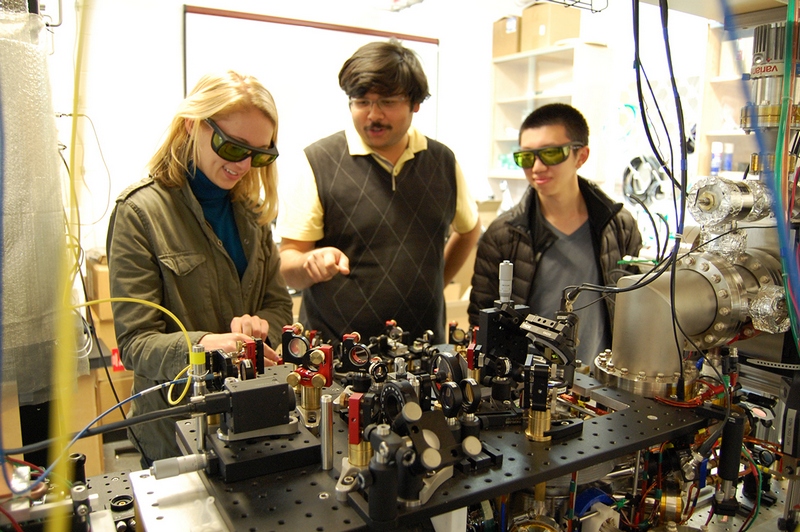Cornell Physicists Verify One of Quantum Theory’s Predictions – the ‘Zeno Effect’
One of the weirdest ideas that come with the quantum theory is that particles don’t behave as they are theorized to behave when someone is observing. It’s something called the Quantum Zeno Effect or the Turing Paradox. It’s a situation wherein an unstable particle stops decaying when observed continuously. It’s as if nature refuses to cooperate as mankind tries to study it.
This year, a group of Cornell physicists have finally come up with the proof to back the Quantum Zeno Effect. This new study confirms the theory that a system can’t change while somebody is watching.
The Experiment
The experiment that led to this verification was conducted in the Ultracold Lab of Cornell assistant professor Mukund Vengalattore, known for his work in establishing the first program in Cornell devoted to studying the physics of materials that have been cooled to temperatures as low as 0.000000001 degree above absolute zero. The details of this study have been published on the October 2 issue of Physical Review Letters.
The experiment involves the cooling of a gas of about a billion Rubidium atoms inside a vacuum compartment, with the mass suspended between laser beams. In this setup, under extremely low temperature, the atoms arrange in a pattern-forming lattice just as what crystalline solids are expected to do. However, under low temperatures, the tunneling of the atoms from one place to another in the lattice is also expected.
The Findings
The researchers conducted the observation of the atoms with the aid of a separate imaging laser since individual atoms cannot be observed using just a standard light microscope. The imaging laser causes the atoms to fluoresce, allowing the microscope to capture the flashes of light and the details of the atomic activities. The imaging technique used, by the way, is not just some standard approach. The researchers had to devise a novel imaging technique so they can observe the ultracold atoms while leaving them in the same quantum state. It turned out that that the imaging laser influences the manifestation of quantum mechanics. When the imaging laser was turned off or dimmed, the atoms tunneled freely. However, when it was activated and made even brighter, the tunneling was greatly reduced.
The researchers were able to demonstrate with their experiment that quantum tunneling can be suppressed by merely observing the atoms and by doing repeated measurements. This is what is known as Quantum Zeno Effect. Zeno (Zeno of Elea) by the way is a Greek philosopher who became famous for his paradoxes, which include “Achilles and the Tortoise” (the quickest runner can never overtake the slowest), “Dichotomy Paradox” (locomotion must arrive at the halfway stage before it arrives at the goal), and the “Arrow Paradox” (the flying arrow is motionless in any one duration-less instant of time).
Comparison with Previous Similar Experiments and the “Emergent Classicality” Effect
There were other similar experiments that also tried to show the Quantum Zeno Effect through the spins of subatomic particles. Years back, the idea of freezing the manifestations of the quantum principle by observation was already explored. However, according to Mukund Vengalattore, the experiments being done now are better because of the higher degree of control current technologies are able to afford. This higher level of control, additionally, enables the gradual tuning of the observations being made. Vengalattore adds that using this new turning capability, they have also been able to demonstrate the effect called “emergent classicality” in the quantum system.
Emergent Classicality, as the phrase implies, is basically the phenomenon wherein a quantum system returns to working under the rules of classical physics because of the presence of an observer. It’s the more technical and scientific version of the idiom “a watched pot does not boil.”
Significance of the Findings
According to Yogesh Patil, one of the graduate students involved in the experiment and lead author of the paper about it, this recent discovery provides an unprecedented tool for controlling a quantum system, perhaps even on an atom-by-atom basis. He noted how atoms are extremely sensitive to outside forces at the state they were in during the experiment. Patil thinks that this could lead to the development of new kinds of sensors.
